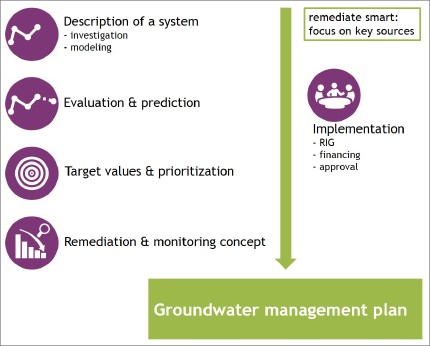Groundwater management plan
Many cities spread in areas once used for industrial purpose. The development of brownfield sites may be complicated by the presence or potential presence of hazardous substances, pollutant, or contaminant.
Many cities spread in areas once used for industrial purpose. The development of brownfield sites may be complicated by the presence or potential presence of hazardous substances, pollutant, or contaminant in the soil or infiltrated in the groundwater. As groundwater has no administrative barriers, contamination from cities often flows from or out to the countryside.
Since groundwater contamination comes from many different (unknown) sources and the plumes overlap, the decontamination has proved to be a major technical and financial challenge.
A groundwater management plan provides efficient remediation and monitoring measures for groundwater protection. The main aspect is to understand the hydrogeological system, the migration of contaminants and the associated processes that occur between the contamination sources and the receptor. Then, remediation measures can be focused on the key contaminant sources that have influence on the receptor, by defining the target values and priorities. Finally, a long term monitoring plan measures the success of the implemented remediation and the management plan.
The cooperation of the authorities responsible for groundwater and soil, as well as stakeholders, is key to the success of the management plan. AMIIGA brings them together in ‘regional implementation groups’ set up in all pilot sites of the project.

